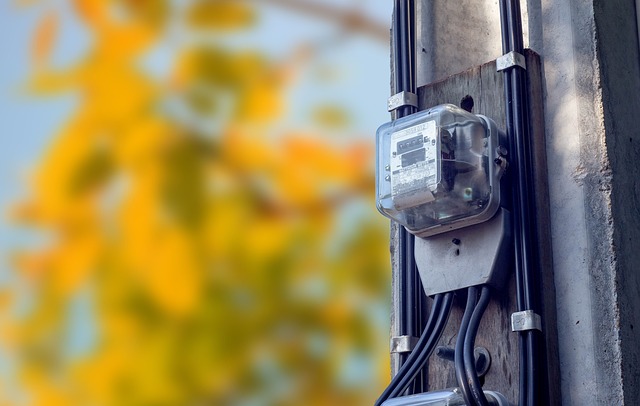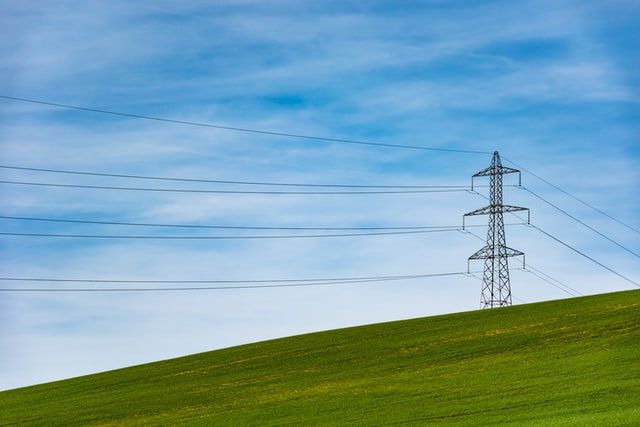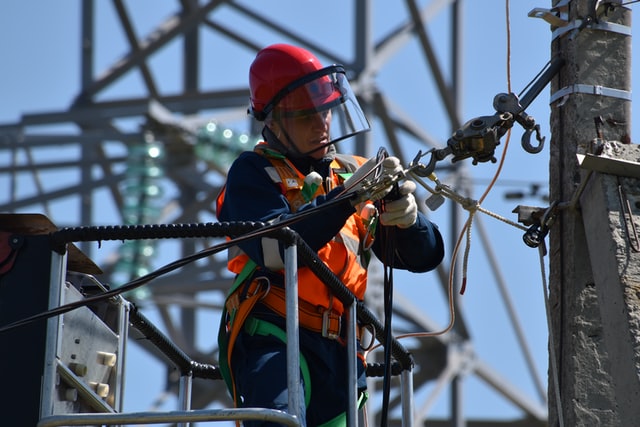Over the coming decade the electricity sector must face increasing demand, increasing regulation, and fundamental changes in the way that electricity grids work on a day-to-day basis. New fluctuating energy sources must be integrated into existing grids, and many of today’s customers may take on a second role as suppliers, writes Jim Morrish, a founding partner at Transforma Insights.
The deployment of new technology is critical to enabling the changes that must happen, and a wide variety of technology-based solutions are being deployed in the electricity industry right now. These range from smart metering applications through to remote asset monitoring and control solutions and solutions to better enable a remote workforce.
According to research undertaken by Inmarsat, investment in IoT solutions overall is expected to be significant for electricity utilities, and with cost reduction and increased efficiency come related benefits in sustainability.
The challenges disrupting the electricity sector
But there are challenges, including in the domains of connectivity, security and available skillsets. Service providers to the electricity sector can help to alleviate many of these problems for their potential clients by delivering robust, sophisticated, and secure applications that can be easily integrated into electricity utility operations. Any service provider seeking to deliver solutions to electricity utilities will need to invest to ensure the delivery of high-quality solutions, and it is likely that working closely with ecosystem partners will significantly ease the development of such solutions.

The electricity industry worldwide is facing a period of unprecedented change. In recent decades distribution grids and other infrastructure have become increasingly smarter, but today’s environment is characterised by a number of disruptive changes. These range from increased demand overall and the rapid adoption of e-vehicles, through to an expected increased incidence of harsh weather events associated with global warming.
The fundamental dynamics of electricity distribution are changing too. Historically, electricity supply has been dimensioned to match demand but with a shift in the mix
of energy generation towards renewable sources (particularly solar and wind) the associated unpredictability of electricity supply is ushering in a need to manage demand to match supply. This is a complete reversal of traditional grid dynamics. Associated with this development is the advent of microgrids that optimise the generation and consumption of electricity within a campus or similar context. Such microgrids will only draw power from an external grid when they are experiencing a net deficit within the local network. These grids may also seek to supply power back to an external grid in circumstances where local generation exceeds local demand. This reverse-supply dynamic can extend down into consumer markets, with households with photovoltaics installed seeking to supply excess power back to the grid.
These developments set the stage for a period of rapid change in terms of the technology that the electricity industry will need to deploy to maintain the stability of supply and distribution systems. And with the rapid adoption of new technologies come new security challenges, the associated risks of which are magnified by the critical infrastructure nature of electricity supply.
As with many industries, the need for security often conflicts with ambitions to develop sophisticated, agile and flexible technology-based solutions.
The coming decade will be characterised by a significant transformation in how the world’s power grids work on a day-to-day basis, taking place against a backdrop of increasing regulation covering aspects ranging from grid stability to heightened safety expectations.
7 ways IoT technology help

Looking at some specific applications in the electricity industry can help us to develop a picture of what the future might look like. As William Gibson noted, “the future is already here – it’s just not very evenly distributed”. The following is a far from complete list of some of the applications that will change electricity industry operations in coming years:
• Smart metering to provide accurate consumption information, and potentially to manage local storage and consumption – in the case of demand response – and enable reverse-supply.
• Monitoring distribution substations, transformers, and feeders to ensure that any faults can be quickly identified and resolved, or pro-actively managed.
• Remote monitoring and control of network assets, ranging from reclosers – that automatically interrupt power in the case of a supply problem – to voltage regulators.
• Drone inspection for transmission and distribution assets, potentially incorporating artificial intelligence to identify any abnormalities.
• Remote monitoring for a range of renewable energy generation assets, including wind turbines and photovoltaics – either at grid level, or at campus or even consumer level.
• Deploying connected inductive sensors throughout agrid to monitor the efficiency of grid operations, and potentially combining this information with smart metering information and using artificial intelligence to identify and combat energy fraud.
• Fleet management solutions for maintenance field forces, including job allocation systems, safety monitoring solutions, and solutions that enable remote workers to access second- and third-line support – possibly using augmented reality and shared video images.
This is a diverse range of applications, but any list can only ever be indicative of the innumerable niche and optimised applications that will be deployed in the electricity sector in coming years. A survey of electricity utilities undertaken by Inmarsat found that in five years’ time the average respondent expected to have achieved a 30% saving in their organisation’s costs by deploying IoT solutions. The same respondents are likely to benefit from additional related benefits including in terms of overall efficiency and carbon reduction. Any IoT solutions that reduce the need for field engineers to visit remote sites are likely to be particularly impactful and may have associated health and safety benefits.
The same survey suggested that electricity utilities would spend 9.9% of their IT budgets on IoT projects in the next three years, a figure matched only by spend on cloud computing. Other big spend areas included related topics such as next generation security, big data analytics, machine learning, and robotics.
Challenges or opportunities?

Given the often-remote nature of electrical grid assets many of these applications are reliant on the internet of things (IoT), and so connectivity in remote locations. As mentioned above security is also critical and clearly any organisation planning to deploy an IoT solution must have access to the relevant skillsets. But Inmarsat’s research in the electrical utilities sector identified deficits in each of these areas. Specifically:
• 58% of respondents struggled to deploy IoT because of unreliable or inconsistent connectivity in the areas they wish to introduce it. 75% of organisations encountered connectivity problems in the trial or proof of concept phase of IoT.
• Only 24% of respondents thought that they had robust cyber defences.
• The majority of respondents said that they would benefit from additional skills to fulfil IoT projects.
In part these concerns are simply a reflection of the realities in the electricity sector: assets are often deployed in remote locations, and electricity utilities are a critical industry that must be particularly sensitive to security concerns. Also, many of the assets deployed in electricity distribution grids are relatively old technology, increasing the challenges associated with integrating them into sophisticated IoT solutions. To a great extent, many of these challenges for electricity utilities are also opportunities for technology service providers to the electricity industry to focus on delivering robust, sophisticated, and secure applications that can be easily integrated into electricity utility operations. A key aspect of such easy integration is the range of connectivity options catered for and the ease of deploying connectivity in all of the locations that a solution might potentially need to serve. Satellite communications can clearly play a role in connecting these devices, particularly in remote locations.
How collaboration builds better IoT solutions

But IoT solutions are often complex, and their development and deployment can draw on multiple domains of competence ranging from sensor technology to artificial intelligence and including edge computing and application enablement. For their part, electricity utilities may not want to be exposed to the complexities of application development, and as noted above they may not have the necessary skill sets. This puts the onus on suppliers to the industry to work together to overcome development challenges to deliver comprehensive and well-integrated solutions which are also reliable and intuitive to use. Overall, ‘better’ IoT solutions can be expected to secure more rapid adoption and also to require relatively lower levels of ongoing support resource. Such a collaborative approach can have additional benefits for service providers, including potential exposure to new sales opportunities through partner companies and also opportunities to co-create solutions to target any identified opportunities. Where satellite communications are included as part of a solution then new aspects of complexity can be introduced, including the need for applications to be tolerant of latencies – generally of up to one second. Satellite-connected IoT applications should also be developed with a view to optimising bandwidth usage. Given these requirements, any service provider that intends to deliver satellite enabled IoT services can particularly benefit from access to specialist knowledge and information in the satellite domain. They may also potentially significantly benefit from engagement in an ecosystem that includes companies that are expert in different aspects of enabling satellite solutions.
Overall, the disruption that electricity utilities are currently facing can be a source of significant commercial opportunity for service providers. While the complexities of IoT deployment can at first seem formidable, cooperation between different parties with a range of different capabilities can help. Building better IoT solutions can be expected to secure more rapid adoption, and improved outcomes for service providers and the utilities sector.
This report first featured inside IoT Now magazine. Subscribe here for your free digital issue:
https://www.iot-now.com/register/











